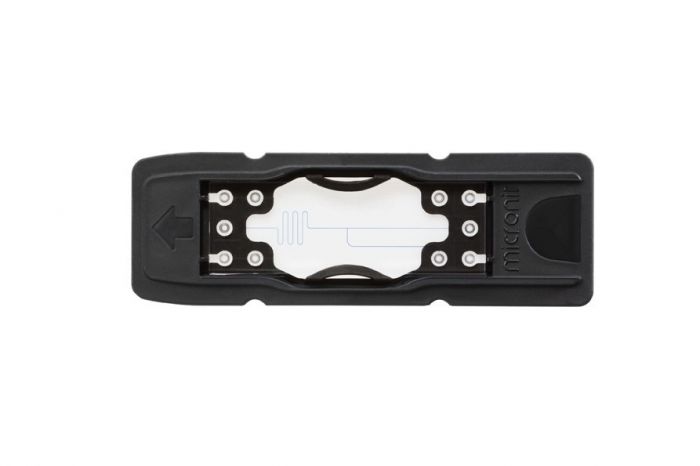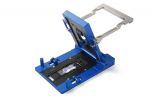T-shaped droplet generator - topconnect
per pack of 3
Pack of three T-shaped droplet generator chips.
Application area
Microfluidic droplet generators are excellent tools for generating highly reproducible microsized droplets with much higher precision and repeatability compared to conventional methods.
Such droplet can be aplied for:
- Emulsification of a oil and water like substance
- Cell encapsulation, a (single) cell can be encapsulated to create it's own micro-environment and makes it easier to disinguish individual cell's.
- Creation of microparticles.
Chip details
The T-shaped dropletgnerator is the most classical type of droplet generator. By tuning the relative viscosities, surface tension, and velocities between the dispersed and the continuous phase, droplets of almost any size can be created.
Oil-in-Water (O/W) droplets can be generated directly using the glass chips. For Water-in-Oil droplets (W/O), choose the coated chips.
Chip design
The chip design is as follow:
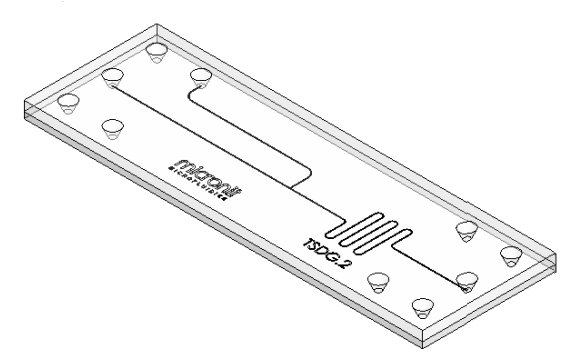
More details can be found in the drawing.
The channels have a height of 10µm and width of 100µm and are etched in a single layer. This gives the following channel profile:
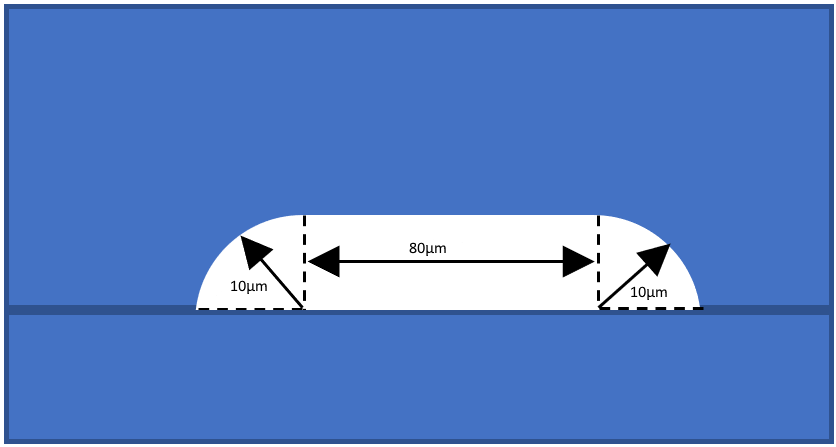
The chips contains a nozzle (half semi-oval) with a size of 34x10µm (width x height) that connects the sub-channel with the main-channel.
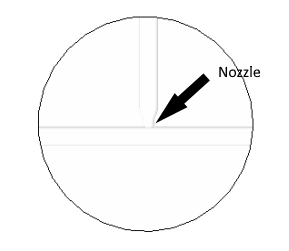
| Unit of measurement | pack of 3 |
|---|---|
| Interface type | Topconnect |
| Chip material | Borosilicate glass |
| Supply format & dimensions | Supplied in a black polymer cardtridge with an external dimension of 75 x 25mm. |
| Chip thickness | 1800µm |
| Number of inlets | 2 |
| Number of outlets | 1 |
| Icon | Label | Description | Type | Size | Download |
|---|---|---|---|---|---|
 | TSDG.2 - T-shaped droplet generator | 67.3 KB | Download | ||
 | Surface wetting properties | 220.3 KB | Download | ||
 | Flow rate instructions | 303.6 KB | Download | ||
 | How to prevent clogging | 153 KB | Download | ||
 | Using the right surfactants | 168.8 KB | Download |

